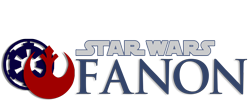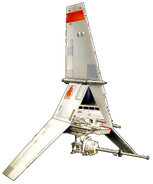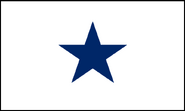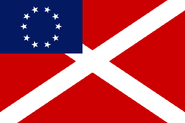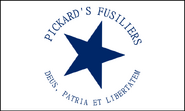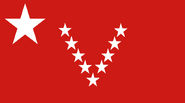| Canon
|
My army is highly skilled, trained and spirited, should Republic forces ever manage to land on my world, then my army will swiftly rout them!
—Jane Zarkan to Count Dooku, on the CSA
The Confederate States Army (C. S. A., or C.S. Army), also known as the Confederate Army, Separatist Army, Confed Army, Rebel Army, Western Army, Western States Army, the Rebs and the Traitor's Army. were the ground forces of the Confederate States of Earth, a Separatist-aligned alliance of nations which joined the Confederacy of Independent Systems.
The C. S. Army was founded in 21 BBY as a successor to the Confederation Army of the Western States Confederation, an army formed of the national armies of the member states of the WSC working together under a common organisation.
The CSA would see only a little service in the First Battle of Earth, most of the fighting being done by the Confederate States Navy, however CSA forces would quickly rout the few Republic forces that managed to breakthrough the Separatist blockade and reach Earth, resulting in a decisive Separatist victory and the capture of Jedi General Maksi Hikar.
The CSA was made up of both organic soldiers and droids. The Confederate States Army Aviation Corps (CSAAC) was the branch of the army which dealt with army aviation, the army equivalent of the Confederate Naval Air Service.
The CSA was widely respected across the CIS for being one of the Separatist Alliance's strongest and most elite ground forces, being rough equals for the Clone army of the Republic, the clones which fought the CSA, and Jedi General Maksi Hikar himself, were suprised by how skilled the CSA were at combat.
The C.S. Army also won a lot of respect amongst their foes of the Union Army. The C. S. Army was widely considered as one of the finest fighting forces in the history of Earth.
In 18 BBY the CSA fought against the forces of the Galactic Empire and the original Imperial puppet government, the Earth Empire, despite the CSA's general elite combat skills and training, the CSA was defeated, one of its critical blows was at the First Battle of Mollun, in which Field Marshal Alexander Norman, a veteran leader of the Earth Civil War, was killed whilst leading the Army of the Zarkan Kingdom. The CSA finally surrendered following the Battle of Zarkan City.
Following the Imperial conquest, the Army was disbanded during the Confederate dismantling and re-organization into the Imperial Kingdom of Zarkania. A number of Army officers and soldiers formed Holdout forces, whilst others returned home. A minority of strongly nationalist soldiers formed the "Imperial Volunteer Legion" (IVL), a pro-Imperial volunteer unit in the local Imperial Army forces. The unit served as the de facto army of the Imperial Kingdom of Zarkania from 18 BBY to 15 BBY, a Imperial puppet state that governed the western half of Aeropica, as well as the former Zarkanian colonies under Imperial occupation, which was ruled by Elizabeth Zarkan, the pro-Imperial cousin of the deceased Confederate President Jane Zarkan.
In 15 BBY the Galactic Empire established the "Imperial and Royal Land Forces" (I&RLF), a collaborationist army which served as the official ground forces of the Imperial Kingdom of Zarkania, into which the Imperial Volunteer Legion was folded. The I&RLF was created to assist the Imperial Army in policing the territory of the IKZ. A large portion of the Imperial technology operated by the post-4 ABY re-established Confederate States Army was formerly operated by the I&RLF, until that organization became the reformed Confederate States Army following the Great Restoration.
Ye Soldiers of the Confederacy was the anthem of the CSA. Sep'ratist Soldier. Bugle Of The West Awake! and Cheer, Boys, Cheer! were popular marching songs that were considered unofficial army anthems. We Conquer or Die was a rallying song of the 15th Zarkan Kingdom Infantry Division but eventually became popular with the rest of the Army. The Song of the Confederate States Signal Corps was the anthem of the Confederate States Signal Corps
Branches[]
The C.S. Army was divided into several branches, including the Infantry, the basic foot soldiers, the Cavalry/Mechanised Infantry, which were infantry units trained for combat involving fast-moving personnel carriers, the Tank Regiment, which focused on armoured vehicle warfare, the Confederate States Army Air Corps, which was the aerial branch of the army, and the Confederate States Signal Corps, which dealt with information and communications.
Equipment and Uniforms[]
The CSA mostly used Separatist-supplied equipment, however it also used native equipment, equipment supplied by the Rebel Alliance and equipment captured or inherited from Republic/Pro-Republic and Imperial/Imperial Zarkanian forces:
Uniforms and body armour[]
Small arms[]
- E-5 blaster rifle
- E-5C blaster rifle
- Zarkan Arms ZR-50 rifle
- DC-15A blaster rifle
- DC-15S
- SE-14 blaster pistol
- Zarkan Arms ZP-759 pistol
- Zarkan Arms ZMP-22 Machine Pistol
- DC-17 hand blaster
- E-5s sniper rifle
- DH-17 blaster pistol
- DL-18 blaster pistol
- T-21 light repeating blaster
- E-11 blaster rifle
- A280C blaster rifle
- TL-50 Heavy Repeater
- ARE-1 Assault Rifle
- BARE-1 Bullpup Assault Rifle
- AR-1(U) assault rifle
- RG-4D blaster pistol
- RK-3 blaster pistol
- SMGE-1 Sub-Machine Gun
- Inglewood & Hart No. 5 Revolver
- Yarrow Rifle
- Sedgewick-Hales Rifle (Limited)
- Perote Rifle
- SGE-1 Shotgun
- SGE-2 Shotgun
- BRE-1 Battle Rifle
- MGE-1 Machine Gun
- Inglewood & Hart King Cobra
- Inglewood & Hart Viper
- Inglewood & Hart Thunderbolt
Heavy weaponry[]
- Zarkan Arms ZLMG-55 light machine gun
- Zarkan Arms ZHMG-39 heavy machine gun
- M3 PAWS (Captured)
- Double-barrel repeating blaster
- RPS-6 rocket launcher
- E-60R missile launcher
- ML-1(R) missile launcer (Captured)
- ML-9 Missile Launcher
- RLE-1 Rocket Launcher
- RLE-2 "Quad" Rocket Launcher
- HH-15 projectile launcher
- DLT-19 heavy blaster rifle
- GLP-1 Grenade Launching Pistol
Artillery, AA, anti-tank and tank guns[]
- J-1 semi-autonomous proton cannon
- Zarkan Arms ZFG-600 Field Gun
- Zarkan Arms ZFG-850 Field Gun
- Zarkan Arms ZAA-880 anti-aircraft gun
- J-1 tank gun
- Zarkan Arms ZAT-900 anti-tank gun
- Zarkan Arms ZSAMS-930 surface-to-air missile system
- Culebre-class Aero-Naval Defence Gun (Leasath Army only)
- Culebre (Leasath Army only)
- Cerastes (Leasath Army only)
Vehicles[]
The CSA used numerous different vehicles, though most of the vehicles operated by the CSA were either supplied by the Separatists or of native design, though the CSA also received numbers of Rebel Alliance vehicles following the Liberation of Earth in 4 ABY, small numbers of captured Republic and Imperial vehicles were also operated.
- Skyhopper-class Patrol Aircraft
- AAT
- Cobra medium tank
- Black Mamba super-heavy tank
- STAP
- Flitknot speeder
- HAG
- TX-130 tank
- AT-TE
- AT-ST
- AT-DP
- AT-PT
- AT-AP
- Rebel attack tank
- T3-B heavy attack tank
- AAC-1 speeder tank
- Rebel combat speeder
- PAC
- APAC
- APTE-1 Armoured Personnel Transport
- K-class Troop Transport (I)
- XT Beetle transport (Limited)
- Mechanized Assault Flyer
Uniforms[]
As with the other branches of the Confederate military the Army wore grey, ranging in colour from light grey to dark grey, the uniforms of the enlisted ranks tended to be of a lighter shade of grey than those of the officer ranks, the battle dress of the enlisted ranks looked coincidently somewhat similar to the officers of Darth Revan's Sith Empire. Enlisted soldiers wore the standard uniform with either a grey campaign hat or helmet, junior officers wore an officers uniform with a forage cap, whilst senior officers wore a dark grey officers uniform with matching officer's cap or wide-brimmed Stetson.
Ranks[]
- Private (Pte)
- Private was the lowest rank in the army, Privates were usually newly-enlisted soldiers who had yet to see action.
- Musician (Mus)
- Musician was a rank equivalent to a Private which were given to troops which served in military bands
- Trumpeter (Tptr)
- Trumpeter was a Private-equivalent rank given to members of the Cavalry who used trumpets to signal orders
- Drummer (Drmr)
- Drummer was a Private-equivalent rank given to those who used a drum. Drummers were typically paired with Fifers and provided a marching beat for a unit. A lot of drummers were boys under combat age.
- Fifer (Fifr)
- Fifer was a Private-equivalent rank given to those who used a Fife. Fifers were typically paired with Drummers and usually provided accompaniment to a Drummer's marching beat. As with Drummers a significant portion of Fifers were boys who were not old enough to serve in combat roles.
- Rifleman (R/man)
- The Rifleman was a standard infantryman who used a standard issue rifle/blaster rifle.
- Ensign (Ensgn)
- Not to be confused with the Navy rank of the same name, the Army rank of Ensign was given to the colour bearer of a unit, one who carried the unit's banner. The rank was considered a noble rank, to be allowed to carry the unit's flag, the heart and soul of the unit, was considered a great honour.
- Lance Corporal (L/Cpl)
- Lance Corporal was the rank above Private, the Lance Corporal was typically the second-in-command of a Section (6-20 troops).
- Corporal (Cpl)
- Corporal was the rank slightly more superior to that of Lance Corporal, the Corporal had command over a Section.
- Lance Sergeant (L/Sgt)
- Though not a standard rank, a Corporal could be appointed to Lance Sergeant, giving him the responsibilities of a Sergeant.
- Sergeant (Sgt)
- Sergeant was the rank between Corporal/Lance Sergeant and Lieutenant, the Sergeant was often second-in-command of a Platoon (15-45 soldiers).
- Staff Sergeant (S/Sgt)
- Staff Sergeant was a rank found in non-infantry branches of the Army that was above the standard Sergeant, though was below the Warrant Officer Second Class (WO II), the S/Sgt was on a same rank level as the Colour Sergeant (C/Sgt) of the infantry. A Staff Sergeant could hold other appointments such as the Company Quartermaster Sergeant (CQMS), the CQMS was the non-commissioned officer in charge of company supplies.
- Colour Sergeant (C/Sgt)
- Colour Sergeant was the rank in the infantry and the Confederate States Marines that was the equivalent of the Staff Sergeant in the other non-infantry Army branches. As per tradition, the Colour Sergeant was also the ultimate caretaker of the regiment's (or batallion's) colours, during ceremonial events the Ensign collected the unit's colours from the Colour Sergeant.
- Warrant Officer Second Class (WO II)
- The Warrant Officer Second Class was the second-highest non-commissioned ranks. WO II appointments included the Trumpet Major, the Accountant Quartermaster Sergeant and the Foreman of Signals.
- Warrant Officer First Class (WO I)
- The Warrant Officer First Class was the highest of the non-commissioned ranks. Appointments held by WO Is included the Academy Sergeant Major, Garrison Sergeant Major and the Drum Major
- Officer Cadet (O/Cdt)
- Officer Cadet was a rank held by trainee Officers. Though superior to the WO I, O/Cdt was typically only held by trainees at Military Academies. Trainee officers would become Second Lieutenants after passing their course.
- Second Lieutenant (2Lt)
- Second Lieutenant was a junior commissioned rank immediately successive to the Officer Cadet (O/Cdt).
- Captain (Capt)
- A Captain, not to be confused with the Navy rank, had command over an entire Company of troops (80-150 troops).
- Field Marshal (F/M)
- The rank of Field Marshal was the highest standard rank in the army, Field Marshals commanded entire field armies. A notable Field Marshal was Alexander Norman, Field Marshal of the Army of the Zarkan Kingdom and brother of Michael Zarkan, née Norman, the first Grand Marshal of the Army. Michael Norman was killed during the First Battle of Mollun, which was part of the Third Battle of Earth
- Grand Marshal (G/M)
- The rank of Grand Marshal was the highest rank of the army, the Grand Marshal commanded the entire army, notable Grand Marshal included Michael Zarkan, President Jane Zarkan's husband and Ahsoka Tano, Jane Zarkan's close friend, who took over the position following the death of Michael Zarkan.
Field Armies of the C. S. Army[]
The "Field Army" was the second-largest organisational unit, after the "Department", field armies were typically comprised of the entire amount of units donated to the C. S. Army by each of the Confederate nations, each nation had a degree of control over their own forces, but general strategy was discussed within the Confederate States Department of the Army, the overall headquarters of the entire army which would then decide upon the best course of action, and which units to take part in the action.
Aside from the field armies of the Confederate nations, there were some, typically smaller, field armies which were either subsets of other field armies, as in the "Army of the Valley", which was a subset of the Army of Valand, before being incorporated into the Army of Valand outright, or ones which were based on the front for which they had been specially created, as in the "Army of the Northeast", which fought as part of the Northern Front, or the "Army of the West", which fought in the Western Colonies.
- Army of Adinia (Early 21 BBY - 18 BBY; 4 ABY - onwards)
- Army of the Border (Early - Mid 21 BBY)
- Army of the Drelan River (Early 21 BBY - 18 BBY; 4 ABY - onwards)
- Army of East Vertania (Mid 21 BBY - 18 BBY; 4 ABY - onwards)
- Army of Lower Etora (Mid 21 BBY - 18 BBY; 4 ABY - onwards)
- Army of the Northeast (Early 21 BBY - Mid 20 BBY)
- Army of North Valand (Mid 20 BBY - 18 BBY; 4 ABY - onwards)
- Army of the Sothland Republic (Early 21 BBY - 18 BBY; 4 ABY - onwards)
- Army of the Toman Republic (Early 21 BBY - 18 BBY; 4 ABY - onwards)
- Army of Valand (Mid 21 BBY - 18 BBY; 4 ABY - onwards)
- Army of the Valley (Mid 21 BBY - Late 21 BBY)
- Army of the West (Early 21 BBY - 18 BBY; 4 ABY - onwards)
- Army of Westland (Early 21 BBY - 18 BBY; 4 ABY - onwards)
- Army of the Zarkan Kingdom (Early 21 BBY - 18 BBY; 4 ABY - onwards)
War Flags of the Confederate States Army[]
Appearances[]
- Ashes of War (First non-canon appearance)
- A.R.K.: Ancients to the Modern Aliens (Chronologically first non-canon appearance)
